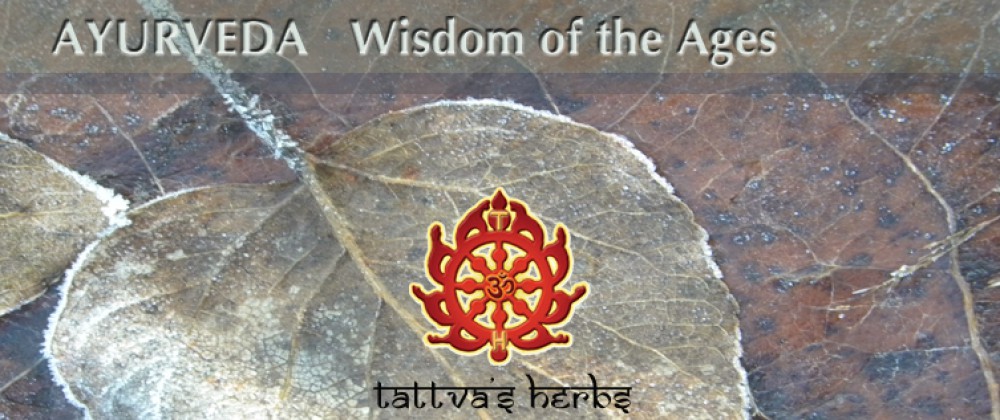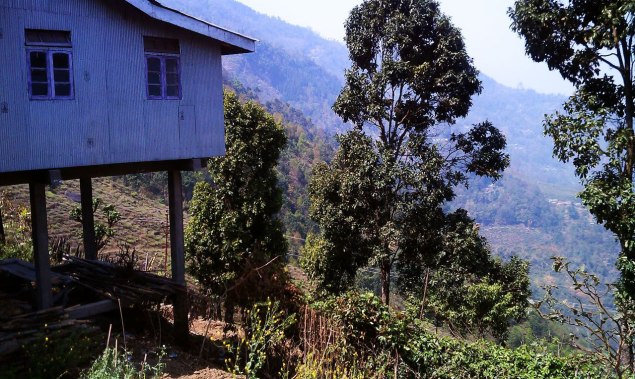A mandala is…
“An integrated structure organized around a unifying center.” Longchenpa

Toast the following ingredients:
1/2 c sesame seeds
1 c sunflower seeds
1 c shredded coconut
add and mix:
1 c puffed rice
Then add:
1/2 c Chyawanprash
1/2 c honey
1/2 c almond butter
6 dates chopped
1/2 c cacao powder
1 Tbsp cinnamon
1 Tbsp cardamom
1 tsp ginger
1 Tbsp Shatavari
1 Tbsp Ashwagandha
1/2 tsp sea salt
Combine all and roll into delightful balls! Yum…
When life gets tough, or mundane, or uninspiring, shifting our focus and allowing our perspective to expand and lift like a big balloon filled with hot, rising air that has no where to go but up and out can offer a break. Exploring all of the corners of our experience from these new and exalted angles presents us with glimpses into new corners of potential experience that we don’t habitually inhabit, but that are really just as easily inhabitable, so long as we give them a little attention and make them, too, feel important.
Consider living from this angle: What would life be like if we insisted on choosing the experience that brought life into our lives? What if we refused to dwell and to fritter and to obsess and to stick on those things that drain life away? If we could only gently and consistently bring ourselves back and re-shift and re-focus and re-group so that we encouraged the most aliveness, all the time, no matter what–whether we are reaching for (or skipping) breakfast, or choosing how to spend the hour right before bedtime, or making big life decisions–what might this be like?
I would like to propose that each of us deserves to feel alive. (Isn’t that why we are here?!) This doesn’t mean we feel joy always, or that we eat birthday cake for every meal from this moment forward, or that we never do anything we don’t want to do ever again. It is instead that we have every right and every responsibility to evaluate all of the corners of our lives and all of the big and the small things, the today and the tomorrow things, the now or the never things–all of the things that we do with our twenty-four daily hours, all of the environments, individuals, institutions, obligations, thought patterns, food patterns, addiction patterns, relational patterns that color our lives–and that we recognize that it is in our best interest to choose those things that bring us alive, and also to learn how to orient toward things so that we rise to life.
Secondly, I would like to propose that each of us is equipped with a very special tool, that whether or not we even ask for its help, is there to tell us whether we are bringing ourselves alive. This is our human body.
Our minds are really skilled at tricking us into believing that particular small things aren’t actually that small, or that there is no way around them, and all sorts of other convincing arguments. Our bodies–every single one of them, I would argue–are quite unskilled in comparison. They have this endearing little quality about them that has them failing miserably when it comes to lying. They all fail in their own unique ways, but they fail nonetheless. They fail at upholding a false truth that everything is okay when we go on living the kind of life, or eating the kind of breakfast, or perpetuating the same old relationship dynamics, or spending the kind of time on the couch or in front of the mirror with the kind of thoughts going through our heads that do not bring us alive.
We can only go on so long choosing or resigning ourselves to or finding ways in which to numb and distract ourselves from the things and the people and the patterns that are too small for us before our bodies start to groan, or scream, or retreat, or go numb or do silly things like stop sleeping or insisting on subsisting on peanut M&Ms alone.
When it comes to making aliveness-affirming choices in our day-to-day and when it comes to huge things, our bodies are a good place to start. Taking quiet time to close our eyes and quiet our minds, and to feel what happens in our chests, or to our shoulders, or deep in our bellies when we hold this or that situation close is where the truth lives. Thoughts are too often confusing and contradictory and schizophrenic and exhausting and wordy, and maybe they don’t even have any feel to them any more, and they just make up a dried-out, worn-out story that’s been told for years and has no oomph anymore. Our bodies are where the juice and the meat and the realness is. This is our gauge for that which brings us alive.
With the sun’s big warmth still here, and as the slivers of light get shed from our days, nature calls upon us to combine the inspiration and the bounty of summer with the harvest, and the taking stock, and then the gradual cutting away and letting go of fall that we will see as the leaves begin to gently float down from the trees. Take time to harness this potent energy, combine it with the honest wisdom of your body, and take an inventory of pulsing, breathing, radiating aliveness in your life.
Written by Sara Bowes
of Sara Bowes Acupuncture
1804 NE MLK Blvd.
Portland, OR 97212
Photography by Susan Bowes and John Clotfelter
Ashwagandha is a renowned adaptogen, improving physical fitness and increasing the immune power of the body.
 Known by its botanical name as Withania Sominfera, Ashwagandha hails a variety of titles including Indian Ginseng and Winter Cherry. As a Sanskrit word meaning “Horse Smell” because the roots smell like a horse, Ayurveda classifies Ashwagandha as a Rasayana. Rasayana herbs foster physical and mental health and help rejuvenate. Ashwagandha is native to Indai, South Africa, and the Middle East, with small yellow leaves and red berry-like fruits.
Known by its botanical name as Withania Sominfera, Ashwagandha hails a variety of titles including Indian Ginseng and Winter Cherry. As a Sanskrit word meaning “Horse Smell” because the roots smell like a horse, Ayurveda classifies Ashwagandha as a Rasayana. Rasayana herbs foster physical and mental health and help rejuvenate. Ashwagandha is native to Indai, South Africa, and the Middle East, with small yellow leaves and red berry-like fruits.
Ashwagandha’s active constituents are of vital importance. Some of these are withanolides, alkaloids, choline, amino acids and other essential fatty acids. The alkaloids are responsible for its pain relieving and antiseptic properties. The withanolides (withaferin A and withanolide D, in particular) support healthy levels of hormones in the body, thus supporting strong fertility.
Researchers have found Ashwagandha significantly affects the immune system in a positive way by increasing white blood cells known as defenders of the human body. With an increased amount of white blood cells in the blood stream, our immune system is able to counteract everyday problems of cough, cold, and fever. Modern research now further informs us of the immune tonic nature of this herb by finding many beneficial antioxidant properties.
Ashwagandha helps relax both muscles and the central nervous system, helping those who are sick with various illnesses as it soothes pain in the joints and muscles during recovery. Ayurvedic practitioners use Ashwaganda to support healthy blood sugar levels, and both the cardiovascular and endocrine systems.
Sanskrit elegantly combines “Ayu,” meaning life and “Veda,” meaning wisdom, to create the word Ayurveda. This ancient study of medicine, prevalent in India for thousands of years before the first century, descended directly from the Vedas. The Vedas -Rigveda, Samveda, Atharvaveda, Yejurveda – are Hindu holy books expounding on a variety of subjects including legendary creation stories, the Hindu deities, teachings of the saints and worldly knowledge for living a happy and healthy life.
Atharvaveda, consisting of 114 hymns, is an “Upveda” or a sub- section of Atharvaveda and is further classified into 8 different subjects – Surgery, Gerontology, Toxicology, ENT, Psychology, Pediatrics, Internal Medicine and Aphrodisiac Remedies.
Lord Dhanvantari, the God of Ayurveda, is considered by some to be a physician to other Indian Gods and Goddesses! All the practitioners of Ayurveda worship Him and seek His blessings before starting their medical treatments.
Charaka (known as the Father of Medicine), Sushruta (known as the Father of Surgery) and Vagbhata, all students of Ayurveda, promoted this knowledge to new horizons during their lifetimes. Their medical scriptures are known as Charaka Samhita, Sushruta Samhita and Ashtanga Hridaya. The period from 200 BCE to 400 CE is widely considered the Golden Era of Ayurveda.
Arabic and Persian translations of these scriptures show adherents following and propagating Ayurveda across the world. Charaka Samhita greatly influenced Islamic scholar Ali Ibn Rabban Al Tabari, who in turn, wrote the first medical encyclopedia. Lord Buddha further spread the knowledge of Ayurveda in eastern Asian countries like China, Sri Lanka, Korea and Tibet.
However, Ayurveda suffered alongside the rest of India’s cultural heritage during the Colonial Era when India was ruled by the British. After India declared her independence in 1947, the Indian people resurrected the Ayurvedic Institutes to teach the layman. Many people have returned to the Ayurvedic focus on prevention instead of modern medicine’s aggressive treatments.
Today, modern practitioners employ Ayurveda in their practice, and the power of yoga and meditation are now widely accepted and practiced all over the world.
We are giving away a FREE Joint Support Package on our Facebook page!
Enter to win here – http://ow.ly/jr4DY
Tattva’s Herbs has officially moved into our new space at 9634 Roosevelt Way NE in Seattle. We are now a part of the “Maple Leaf” neighborhood in Seattle, and were fortunate enough to be interviewed by Mai Ling of the Maple Leaf neighborhood blog. Here is how the interview went:
Tattva’s Herbs Organics officially opened up at its new Maple Leaf location at 9634 Roosevelt Way N.E. on Nov. 19, but there’s still plenty of moving in that needs to be done.
We spoke with marketing director Dana Silverman to find out how business is going with the holidays right around the corner:
Q: How is business so far?
A: Business is great. Not much has changed since moving, because we are primarily online, but would love for people in the neighborhood to come in!
Q: What kind of products will you showcase to bring pedestrian traffic into the store?
A: We have a retail area and offer samples of Coconut Oil, anti-aging cream and oil, healing creams, Chyawanprash, and other products. We will soon have a more apparent sign hung on our awning as well.
Q: You’re now open from 8:30 a.m. to 4 p.m. weekdays. Any plans to expand retail hours?
A: We will probably not expand retail hours unless we see a demand for it. Customers are always welcome to order online, phone or fax, and pick them up during retail hours, or have products shipped to their homes.
Q: How long has Tattva’s Herbs been in business?
A: Tattva’s Herbs has been in business about 13 years. It has always been located in Seattle, and we continue to expand every year.
Q: What else can you tell Maple Leaf residents about Tattva’s Herbs?
A: We offer Ayurvedic herbs, supplements, beauty products and oils for a wide variety of health conditions, as well as general health and well-being.
If you live in Seattle, please come check out our new digs!
RT @brianhkerr: Great post on Shilajit – Biohacker Food – AKA Dirt! http://ow.ly/fB9fv
@healthyhabits @drmercola #biohacker #shilajit

The Orphanage- Radhika fund